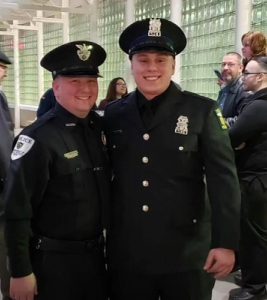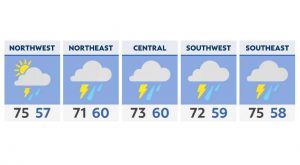CLEVELAND — Jim Sheehan of the Ohio City Bicycle Co-op spends a lot of time refurbishing used bikes, and said not all bikes are made the same.
What You Need To Know
- Consumers should ensure the bike they buy is made with high-quality parts
- The brake system is a dead giveaway if a bike made with low-quality parts
- Regular maintenance can help keep a bike running smoothly
Sheehan can usually tell right away if the bike is from a department store. He said those models may be harder for a mechanic to fix, or even tune up. A common problem is the brakes.
“This is going to be a pain to get out,” Sheehan said as he started working on the department store brand bike.
No matter how much he tinkers with the bike, he can’t keep the brakes from rubbing against the rotors.
“There’s no way to adjust this,” Sheehan said as he tried to adjust the brakes. “There’s nothing to work on. You can’t do a thing about adjusting that, so you have to live with it.”
He pointed out another big box store bike, which he said has lower quality parts in the brake system, so it may take more time and effort just to stop.
“I’m going to squeeze the brake as hard as I can, and the wheel will still turn,” Sheehan said as he tested the brakes.
He said, in some cases, these bikes will have unnecessary parts on them.
He explained what shacks are, and what they do for a bike.
“That’s what the shock is supposed to be doing is keeping the wheel on the ground when you go over bumps,” Sheehan said. “For riding on the street, it’s useless. Extra weight and one more thing to go wrong.”
Sheehan said if these go bad, the cost of fixing them wouldn’t be worth it. He said riders would be better off getting a new bike.
Consumers should look out for signs when considering what kind of bike to buy, he said.
The co-op sells used, shop-quality bikes, which are much easier to fix, he said.
“Really these bikes should be running like new,” Sheehan said.
The co-op has a list of safety tips for checking on a bike:
Safety Check – Steering, Stopping and Security
Steering
- Check that the stem and handlebars are tight: Hold the front wheel between the knees and try to turn the handlebars (sideways, and up and down) Check for loose brake levers, bar-end extensions and caps and grips or tape.
- Check the front tire: It should be inflated so it feels hard (the max. pressure is printed on the sidewall), and free of wobbles, cuts, cracks, bulges and bald spots.
- Check the front wheel: It should be mounted tightly and evenly in the fork, it should be round and true and the spokes should be evenly tight.
Stopping
- Squeeze the brake levers as hard as you can: They should not touch the handlebar. If they do, you may need to turn out the barrel adjuster at the end of the cable-housing and secure it with the lock ring. Pedal brakes must be secured.
- The brake pads should touch the rims flatly and evenly all the way around, and not above it, where they may contact the tire. They should be thick enough.
- With each brake on in turn, push the bike forward and back; the brake should not wobble too much. The brake pads should not rotate when turned by hand.
Security.
- Grab the seat on the front and back; it should not twist or tilt.
- All other parts should be attached securely; pedals, cranks, rear wheel, kickstand, rack, fenders, water bottles, and any accessories and baggage.
- Check helmet fit: It should cover the forehead, with the junctions just below the ears, and very little slack under the chin. Riders should not be able to push it down onto your nose, or up off of their forehead. Secure shoe laces and right pant leg.
Finally, take a careful test ride to:
1. Shift through all the gears (to check derailer limits), and test the brakes.
2. Pedal hard in your most-used gears (to check for chain wear)
3. Try riding no-hands, if able (to check fork alignment)




